Pecan nuts are deliciously sweet and chewy morsels that are most famous for their starring role in one of America’s all-time favorite desserts: Pecan pie.
And the trees these buttery nuts grow on are as beautiful as the bounty they yield is delicious.
Pecan trees are native to the southern USA (they are great trees to plant in North Texas) and do especially well in deep, fertile earth.
Unfortunately, they sometimes fall prey to insect infestations that can lead to nut loss if the problem gets out of hand.
Normally, however, while the galls are not particularly beautiful, they won’t cause any real harm to the tree.
The first indication that a pecan tree is infested is signs of damage to its leaves, usually in the form of bumps or blister-like growths.
Table of Contents
What are the bumps on the leaves of my pecan tree?
Bumps on the pecan tree leaves are leaf galls caused by an insect called the Pecan Leaf Phylloxera. In extreme cases, galls can be detrimental to tree health. Damaged areas must be pruned off and the tree treated with an aphid-specific insecticide to avoid reoccurrence in the next growing season.
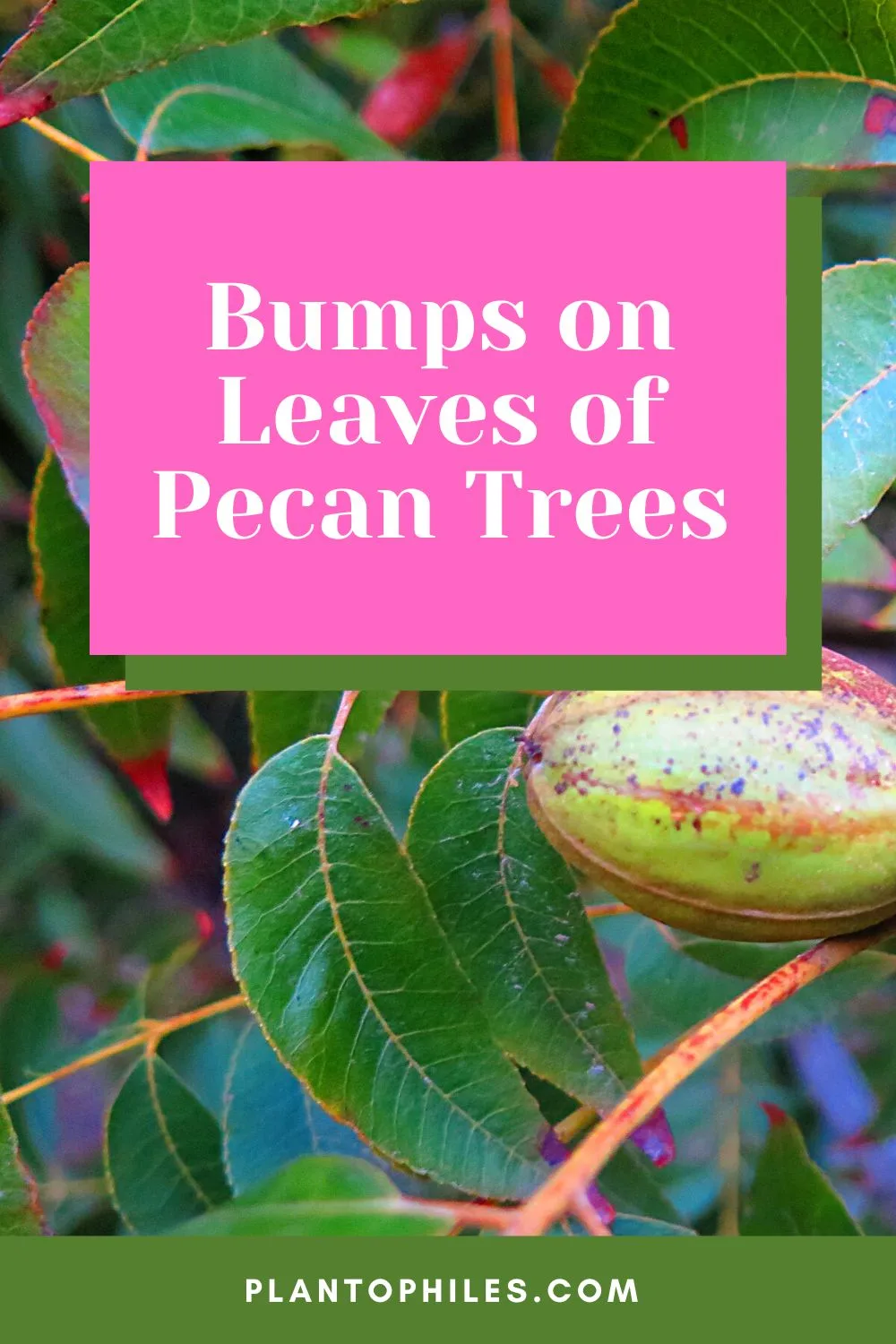
What Causes Bumps on Pecan Tree Leaves
Pecan Leaf Phylloxera are aphid-like insects that feed exclusively on the leaves of pecan trees.
After phylloxera hatch from eggs on the bark of pecans, they make their way over to the newly emerging leaves and gorge on the young leaf tissue.
The blister-like bumps occur because of the damage to the leaves caused by the insects when feeding. The galls develop to prevent the wounds on the leaves from spreading.
The insects then use these protective encasings to lay eggs their eggs in.
How to Identify What Bumps on Pecan Tree Leaves are
Understanding the reasons for poor quality pecans requires nut growers to look beyond the nuts themselves and find the root cause of their trees’ poor health.
Identifying what problems are affecting a pecan tree includes a careful examination of the tree’s appearance.
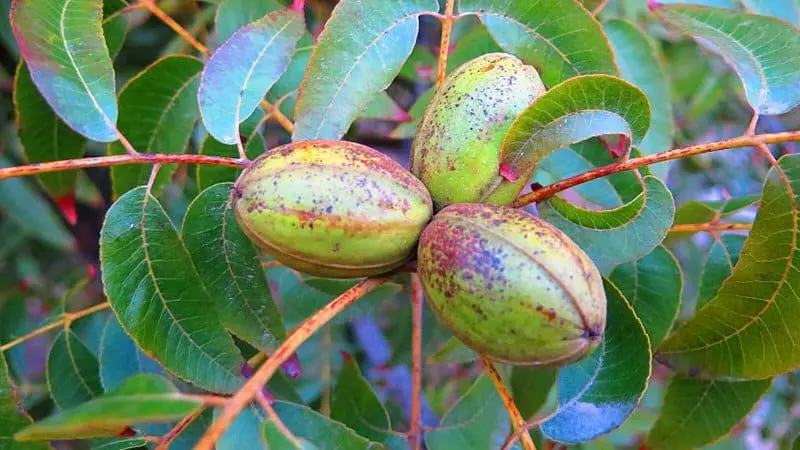
Bumps on pecan tree leaves caused by aphid-like insects closely resemble the bumps on the leaves of maple trees caused by eriophyid mites.
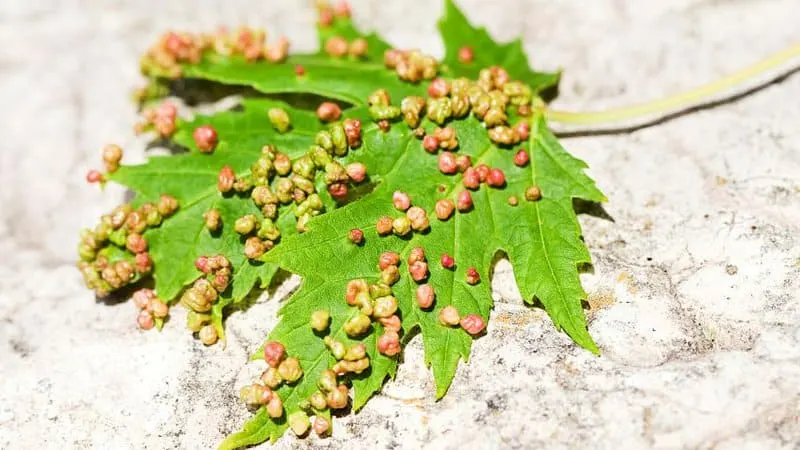
If you suspect that your tree pecan tree has leaf gall, look out for these specific symptoms:
- Wart-like, green lumps approximately ¼ of an inch to 1 inch in diameter that emerges in May and cracks open in late spring or early summer
- Cream-colored, winged nymphs that are approximately 1/8 of an inch in length emerge from the cracked open galls
- Yellowing of affected leaves and leaf drop
- Nut drop
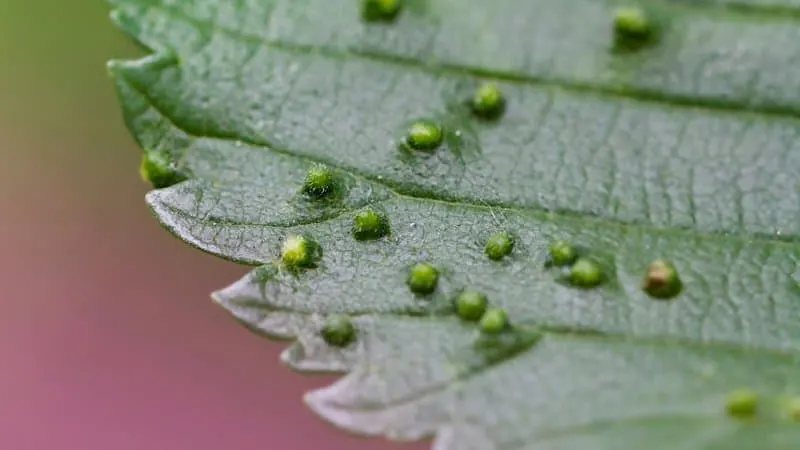
If some or all of these symptoms are present, it is safe to assume that your pecan tree has a phylloxera infestation.
Once you have identified the cause of the bumps on the leaves of your pecan tree, it’s time to think about how to get rid of them.
You’ll have to be patient though. Once the galls are present, you will have to wait until the following spring to try to heal your tree.
How to Treat Bumps on Pecan Tree Leaves
To eliminate bumps on pecan tree leaves, you have to time your treatment correctly.
The time to take action against bumps on pecan tree leaves is when the leaves are just beginning to unfurl in early spring.
If you know that one or more of your pecan trees is prone to developing leaf gall, spray the trunks and branches with an anti-aphid insecticide before the growing season begins.
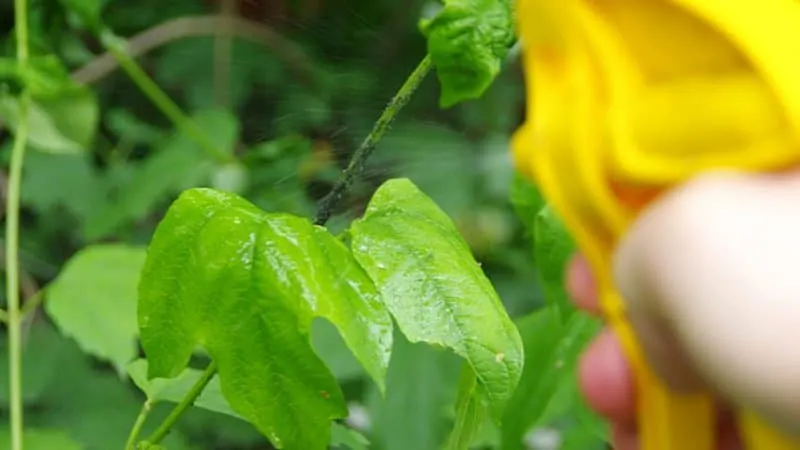
The reason you need to spray the trunk and not just the leaves is that most Phylloxera eggs spend the winter in the nooks and crannies of pecan tree bark.
By spraying them in early spring, you can avoid them making their way to the new leaf growth.
Follow up your initial spraying with two or three more rounds, depending on the instructions for the specific insecticide you are using.
Unfortunately, once you notice damaged leaves, you have already lost the battle against the bumps on your pecan tree leaves for that growing season.
Just make sure you remember to tackle the problem head-on next year in the early spring to avoid a repeat of this situation.
Try to slowly work toward getting rid of aphids forever and see your journey to restore your pecan trees to perfect health as a marathon, not a sprint.
Another thing you can do to prevent leaf gall on pecan trees is to make sure that you clear the leaves from under affected pecan trees in the autumn.
Either you burn the leaves you cleared earlier or dispose of them in the trash in a plastic bag. While most Phylloxera lay their eggs in the bark of pecan trees, there are usually still a number of eggs left on the leaves.
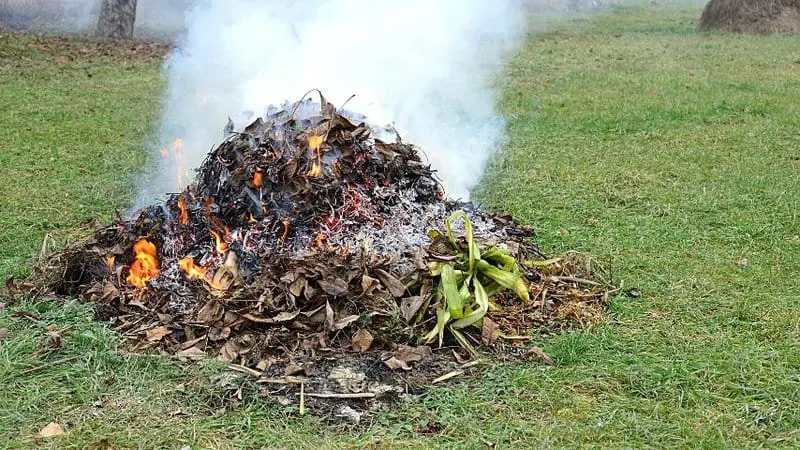
If left on the ground during the winter, the leaves can end up hosting Phylloxera eggs that eventually climb up the bark and begin to feast on the new leaves again come springtime.
How Bad are Bumps on Pecan Tree Leaves
Well, the short answer is that bumps on pecan tree leaves are not that bad. If the infestation is relatively minor, then pecan tree leaf gall is essentially a cosmetic issue.
There’s no need to freak out if you notice chickenpox-like bumps emerging on a few of your pecan tree leaves in the late spring.
However, if the bumps on your pecan tree leaves just keep developing until your whole tree looks like it is one big warty mess, then you may have to face the fact that you have a more serious problem.
In extreme cases, pecan tree leaf gall can lead to nut drop and can be detrimental to tree health, including leading to the death of whole limbs.
So, what does a severe infestation look like?
Well, if most of the tree’s leaves are covered in blister-like nodes, you may well have a serious problem.
That said, if the leaves remain on the tree and don’t go yellow and drop, and if the nuts remain on the tree until they have ripened, the problem is not affecting the health of your tree.
Be wary of yellowing leaves and leaf and nut drop.
If either of these issues develops, you may want to contact a local arborist for location-specific advice.

Daniel has been a plant enthusiast for over 20 years. He owns hundreds of houseplants and prepares for the chili growing seasons yearly with great anticipation. His favorite plants are plant species in the Araceae family, such as Monstera, Philodendron, and Anthurium. He also loves gardening and is growing hot peppers, tomatoes, and many more vegetables.


